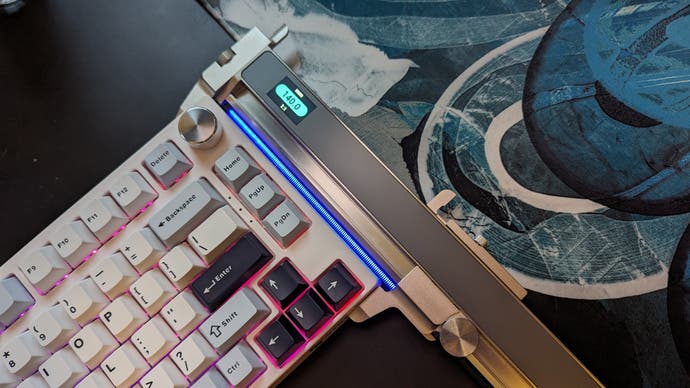DF's tools of the trade: digital callipers
A new series looking at the tools used by Digital Foundry writers to test games and hardware.
Digital Foundry's tools of the trade is a new series looking at the tools - physical and virtual - that DF members use to carry out their work analysing video games and hardware. In this first episode, Will Judd shares his thoughts on digital callipers, specifically the Hozo NeoCaliper.
There are a handful of tools that should be in any PC gamer's toolkit, from the Phillips-head screwdrivers you'll need to build or modify pretty much every PC out there to the Allen keys that can help you adjust sim racing rigs, monitor arms and other more substantial furniture. However, one useful tool I've not seen mentioned much is a set of callipers - whether that's a traditional analogue set or more newfangled digital alternatives. I've used a set of the latter for several years now, and I'm always amazed at how useful these can be for PC building in general - and PC journalism more specifically.
First, the general stuff: callipers are extremely useful for small form factor Mini ITX builds, where you could start by just cramming every component into your case, but it's often better to measure your components before you begin to make sure you'll have enough clearance. Callipers won't replace a tape measure for extremely long objects - I'm thinking of graphics card length, for example - but smaller objects like CPU tower coolers or radiators can be measured quickly and accurately with digital callipers, allowing you to ensure that your intended setup is actually workable in the often limited space available. It's worth pointing out that as well as measuring the size of objects (outer diameter), you can also measure gaps (inner diameter) - the arms on the top of a set of callipers grip in the opposite direction, allowing you to see exactly how much space you have available.
.jpg?width=690&quality=75&format=jpg&auto=webp)
I've been experimenting with 3D modelling and 3D printing recently, and callipers are unsurprisingly quite useful here too. If you're trying to recreate a particular object - or create something that seamlessly attaches to something else - then being able to check a range of measurements quickly and accurately is key to avoiding the frustration of printing out something that looks right but turns out to be a few millimetres out of whack (ask me how I know!). The particular set of callipers I'm using at the moment, Hozo's NeoRuler (and its NeoCaliper attachment), even allow you to set a scale for your measurements, so if you're printing a model that's meant to be 1:40, you can measure individual parts of that model to make sure they're a realistic size!
I don't think that either SFF builds or 3D modelling are common enough use cases for digital callipers to be a must-have purchase for nerds everywhere, though they are fairly inexpensive and even occasional use might justify a cheap set. It's as a PC-focused tech journalist that these callipers have more often come in handy from everything from accurately describing the dimensions of objects when reviewing them to making modifications to sim racing gear.
For example, it's common for there to be some variation in exactly how manufacturers measure peripherals like mice, where there are a bunch of different points that you could measure a mouse's width... and therefore while you may see accurate numbers on a product page or press release, it can be impossible to confidently compare mice made by different companies. That's why I tend to eschew those printed numbers and just check for myself, as I know I'm measuring in the same place in different mice - and with a good set of digital callipers, you can run through all of the various measurements - on camera if desired! - within a few seconds. You could do the same with a tape measure, but it takes longer, it's less convenient and there's more ambiguity in the measurement.
I also find callipers useful when it comes to performing repairs and maintenance. Being able to precisely measure the diameter of a broken fan in a graphics card, or the length of a bolt that you need a few more of, can save a lot of time and grief versus eye-balling it or even using a tape measure. Sizes are relatively standardised in the PC space and you'll likely learn the look of the most common measurements before too long, but it never hurts to confirm that your suspicions are correct!
There are quite a few callipers on the market these days, with the cheapest often being digital callipers that run off of a replaceable coin cell battery rather than traditional analogue versions. The Hozo NeoCaliper is a high-end option, but it is also demonstrably more advanced: rechargeable over USB-C and part of a smart ruler set with an integrated LCD display and buttons that allow you to set scales as I mentioned earlier, change between different units on the fly and much more.
These are super cool, and they're accurate to a tenth of a millimetre which is impressive. Of course, they also have a lot of other measuring functionality, but if you're a PC gamer rather than a more general hobbyisy or machinist then a set of a good cheap set of digital callipers might be a better option.
I'm curious to hear whether anyone else uses (digital) callipers regularly - and if so, what you use them for! If you don't use them, do you think they'd be useful? Please do chime in via the comments box or poll below.








